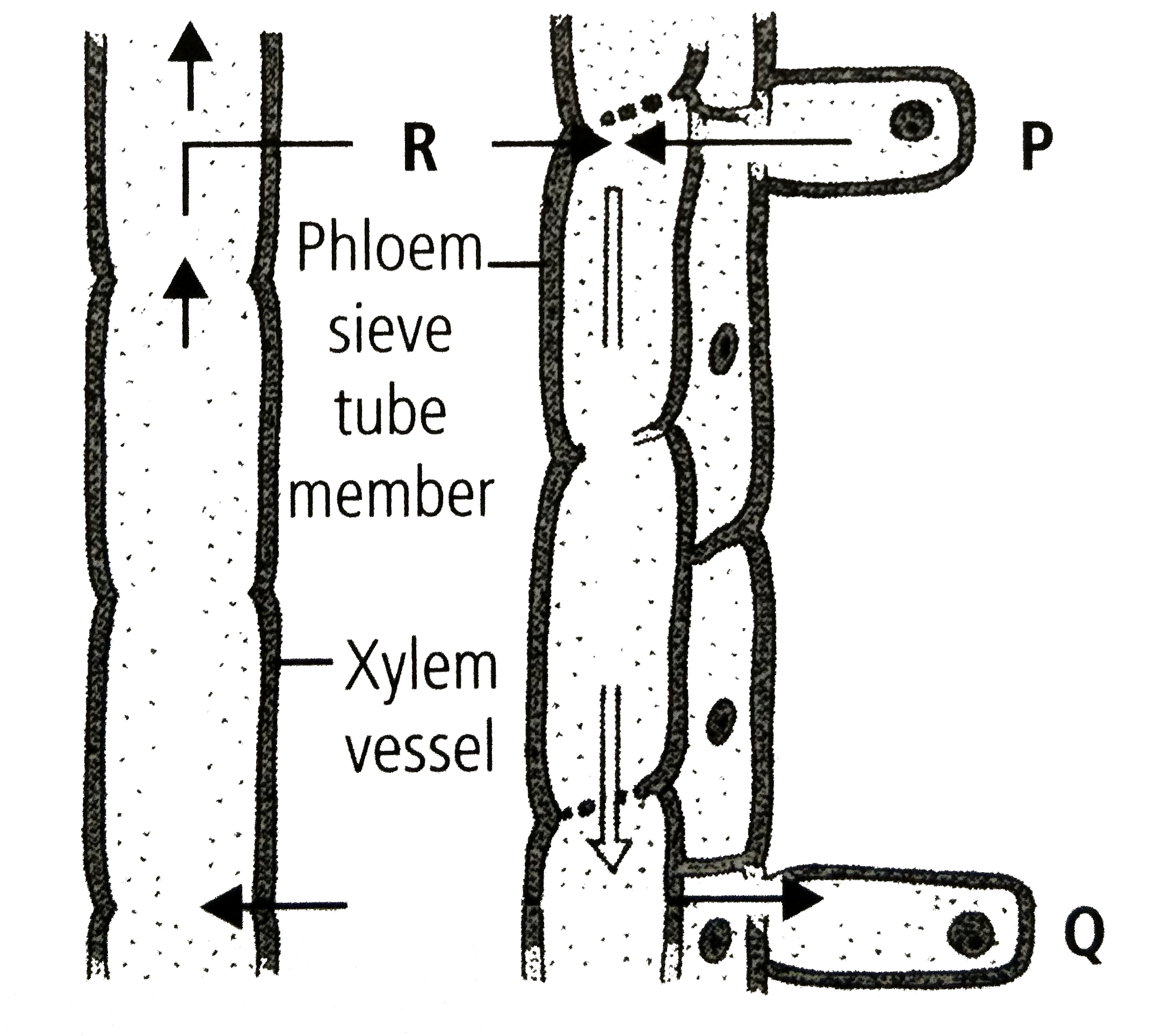The translocation of organic solutes in sleve tube membres is supportted by
Root pressure and transpiration pull
P- proteins
Mass flow involving a carrier and ATP
Cytoplasmic streaming
The correct Answer is:C
Step-by-Step Solution:
1. Understanding Translocation: Translocation refers to the movement of organic solutes, primarily sugars, from one part of the plant to another. This process is crucial for distributing the products of photosynthesis throughout the plant.
2. Role of Phloem: The translocation of these organic solutes occurs in the phloem, which is composed of sieve tube members. The phloem is responsible for transporting nutrients, especially sugars, from the leaves (where they are produced) to other parts of the plant.
3. Mechanism of Transport: The transport of organic solutes in sieve tubes occurs against the concentration gradient. This means that the solutes are moved from areas of lower concentration to areas of higher concentration.
4. Involvement of Proteins: The translocation process is facilitated by specific proteins known as carrier proteins. These proteins help in the movement of solutes across the cell membranes of the sieve tube members.
5. Energy Requirement: Since the movement of solutes is against the concentration gradient, it requires energy. This energy is provided by ATP (adenosine triphosphate), which is generated through cellular respiration.
6. Mass Flow Hypothesis: The process of translocation is often explained by the mass flow hypothesis, which states that the movement of solutes creates a pressure difference that drives the flow of sap through the phloem.
7. Conclusion: Therefore, the translocation of organic solutes in sieve tube members is supported by the presence of carrier proteins and the energy derived from ATP, facilitating mass flow against the concentration gradient.
---
Topper's Solved these Questions
- TRANSPORT IN PLANTS BOOK - AAKASH INSTITUTE ENGLISHCHAPTER - TRANSPORT IN PLANTS EXERCISE - Assignment (Section D) Assertion-Reason Type Questions
10 Videos
- TRANSPORT IN PLANTS BOOK - AAKASH INSTITUTE ENGLISHCHAPTER - TRANSPORT IN PLANTS EXERCISE - Assignment (Section B) Objective type
30 Videos
- THE LIVING WORLDBOOK - AAKASH INSTITUTE ENGLISHCHAPTER - THE LIVING WORLDEXERCISE - TRY YOURSELF
44 Videos
Similar Questions
Knowledge Check
Given figure demonstrates the translocation of organic solutes according to pressure flow hypothesis.

Which out of the following statements is incorrect regarding this?AA continuous high osmotic concentration is maintained in region P, which loads a sieve tube element by passively transporting solute molecules into it,BR shows the movement of H2O into sieve tube elements from nearby xylem vessels by osmosisCTranslocation of organic solutes takes place from region P with high turgor pressure to region Q with low turgor pressureDIn region Q material is either consumed or is converted into insoluble storage forms resulting in decreased osmotic pressure.
The translocation of solute is
View SolutionProtoplasmic streaming theory of translocation of organic solutes was first proposed by
View SolutionTranslocation of photosynthetic end products in sieve tubes is
View SolutionEustachian tube is supported by : -
View SolutionSugar translocation in sieve tubes is a
View SolutionWhich of the following statements is/are incorrect?
(i) Water and minerals, and food are generally moved by a mass or bulk flow system.
(ii) Bulk flow can be achieved either through a positive hydrostatic pressure gradient or a negative hydrostatic pressure gradient.
(iii) The bulk movement of substances through the conducting tissues of plants is called translocation.
(iv) Xylem translocates organic and inorganic solutes, mainly from roots to the aerial parts of the plants.
(v) Phloem translocates water, mineral salts, some organic nitrogen and hormones, from the leaves to other parts of the plants.
View SolutionDescribe the mass flow hypothesis for trans location of organic solutes (food) in plants.
View Solution
